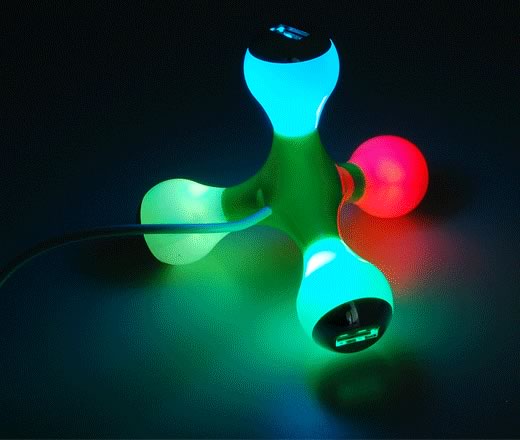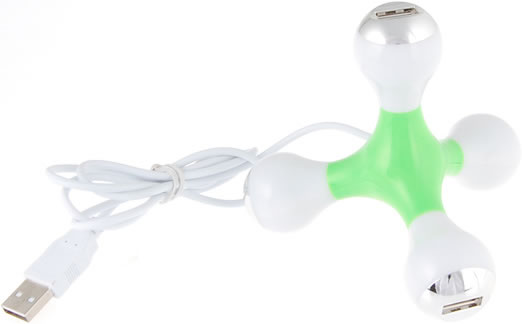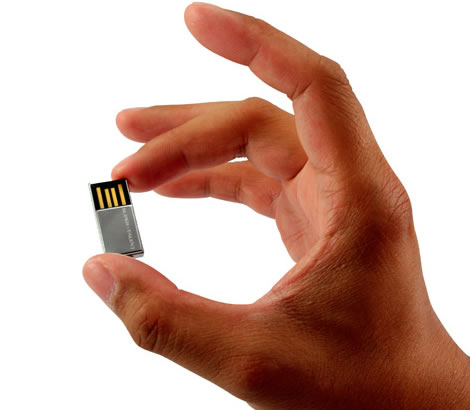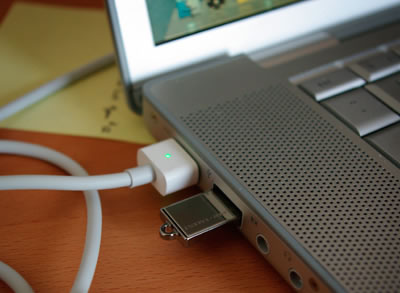 Do Not Use a USB Headset!
Do Not Use a USB Headset!
If you have a USB headset, you won't want to use it with Voice Buddy 3. And, since USB headsets cost about 3-4 times more than analog headsets, this is very welcome news. I discovered that using a USB headset conflicts with VB3-VOIP technology due to the way USB headsets control the microphone. Using a USB headset will prevent Voice Buddy from working with VOIP clients such as Roger Wilco.
Use only analog headsets for full VB3-VOIP compatibility. Analog headsets certified by eDimensional for best results with Voice Buddy include the new eDimensional Audio FX (see details below) and Plantronics Audio 90. In order to enjoy the VB3-VOIP simultaneous communication feature, you will need an analog headset with a good quality microphone that is certified for voice recognition applications. For this review, I used both the Plantronics Audio 90 that came with Voice Buddy 1 and the new Audio FX that comes with Voice Buddy 3. Both worked perfectly. You don't want to use a USB headset because the USB interface is incompatible with simultaneously using Voice Buddy and Voice Over Internet Protocol (VOIP) clients such as Roger Wilco. We tested this fact using a top quality USB headset manufactured by Andrea, one of the very best producers of first class voice recognition headsets. There is nothing inherently bad about USB headsets. They just don't work with simultaneous voice recognition and VOIP.
A good quality headset is critically important for accurate voice recognition and USB headsets usually give you much better signal-to-noise ratios than analog (see our test results below). Cheap headsets are very noisy, have poor quality microphones with poor quality noise cancellation properties. A bad microphone will cause Voice Buddy to misinterpret your commands. With a good microphone and proper voice training and setup, I discovered Voice Buddy recognition is extremely high at well over 98% accuracy.
 Audio FX Force Feedback Headset
Audio FX Force Feedback Headset
Voice Buddy 3 is available with the optional Audio FX force feedback headset: The Audio FX from eDimensional which our ad guy affectionately called the 'headbanger.' The Audio FX has a force feedback system that synchronizes the vibration effects with the sound and brings new excitement to flightsimming, music, movies, gaming and any other audio experience.
The "Headbanger" Headset
The Audio FX allows you to turn on an amazing force feedback system that synchronizes the vibration effects with the sound. It's awesome when you crank up the rock-and-roll. OK, I'll admit to being a Baby Boomer rocker. When I cranked up George Thoroughgood's "Bad To The Bone" with this headset it gave a whole new meaning to the term "head rush." According to Our Man in Blackpool, it also thrilled IFC conventioneers when they cranked up the sounds for their favorite aircraft. Mike said, "I could tell by the beatific and wide-eyed looks on their faces that the headbanger effect was a big hit."
 The eDimensional Audio FX headset has built-in noise cancellation that blocks unwanted ambient noise and prevents it from interfering with your voice commands. It has a high-quality, voice recognition certified microphone and a fully adjustable microphone boom. The boom, by the way, is a perfect place to put the TrackIR3 Pro tracking dot. Much better than on your forehead or cap.
The eDimensional Audio FX headset has built-in noise cancellation that blocks unwanted ambient noise and prevents it from interfering with your voice commands. It has a high-quality, voice recognition certified microphone and a fully adjustable microphone boom. The boom, by the way, is a perfect place to put the TrackIR3 Pro tracking dot. Much better than on your forehead or cap.
Audio FX creates a unique force feedback envelope that is synchronized to the sound action of your game, music, DVD, or whatever sound comes though the headphones. It also has flashing lights on the headphones that scale to the sound intensity and vibration effects.
The overall feel of the Audio FX is surprisingly comfortable considering that it is larger than the Plantronics Audio 90. The Audio FX looks and feels more like an actual pilot headset. The ergonomic design, combined with the large padded headband and excellent balance make it very comfortable to wear for long flights. The soundproof padding on the headphones effectively blocks out all ambient noise. This immerses you into an audio envelope that is impressive to say the very least. It's hard to describe in so many words. You just have to try it and see for yourself.
Combines the Best of Analog and USB Technologies
If you've ever priced USB headsets, you know how absurdly expensive they are, often costing over US$100. While costing much more, USB headsets sound the same to me as lower cost analog headsets. So, I don't get it. On the other hand, USB enables designers to supply power to USB connected devices. The Audio FX does not use batteries to power the force feedback system. The headset gets it power  from your computer's USB port. So, it blends the economy and excellent sound/voice signal qualities of analog connections with the convenience of USB electrical power and still comes in at a very low price point. I think this is excellent engineering for price performance.
from your computer's USB port. So, it blends the economy and excellent sound/voice signal qualities of analog connections with the convenience of USB electrical power and still comes in at a very low price point. I think this is excellent engineering for price performance.
As shown in the photo, the Audio FX has three jacks:
The speaker jack is marked with an orange label and the letters SPK.
The microphone jack is marked with a pink label and the letters MIC.
The rectangular black jack is the USB connector which supplies the power for force feedback.
The Audio FX also has three controls on an inline switch console. From left to right:

Vibration control that enables you to adjust the energy of the sound produced that synchronizes with the vibration action and the flashing lights on each headphone. This thumbwheel controls the intensity of those combined effects. When using Voice Buddy, I recommend that you set the vibrations effects to a medium or low level.
Vibration On/Off switch which enables you to instantly turn the vibration effects on or off.
Volume control which adjusts the sound volume. Sound volume will also influence the synchronization of the vibration effects. The louder the sound, the greater the vibration effects. You can combine volume and vibration to achieve just the right balance of audio force feedback.
Audio FX Makes Voice Buddy a Unique Value.
Voice Buddy comes in two versions: software and Audio FX headset or software only. According to eDimensional executive, Michael Epstein, "You must make sure to use a top quality headset that is certified for voice control. Right now, we only certify two headsets: our new Audio FX and the original Plantronics Audio 90 that we shipped with Voice Buddy 1.0."
"Good voice control requires a very good microphone," Epstein explained. "We improved upon our original concept by creating the world's first force feedback headset. So now, you not only get excellent voice recognition qualities and stereo sound, but you also get an exciting new force feedback effect that gives new meaning to the term 'head rush'."
Once again, Epstein was right! The Audio FX vibration effects are quite amazing. At first, I cranked them to the max to get the feel of it all. I soon found that to be a bit too intense and dialed them down a bit to better suit the sound environment I wanted to create. Sound is very important on the flight deck. It tells you when all is good and also alerts you to impending doom.
The Audio FX alone is an excellent value. But, when you consider that it's included with Voice Buddy for the US$79.95 price, it's a real bargain.











